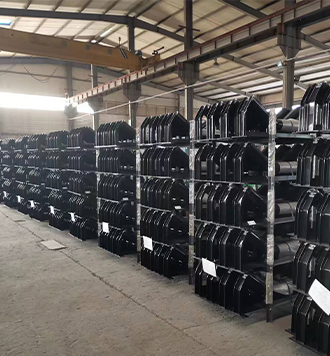 Afrikaans
Afrikaans  Albanian
Albanian  Amharic
Amharic  Arabic
Arabic  Armenian
Armenian  Azerbaijani
Azerbaijani  Basque
Basque  Belarusian
Belarusian  Bengali
Bengali  Bosnian
Bosnian  Bulgarian
Bulgarian  Catalan
Catalan  Cebuano
Cebuano  Corsican
Corsican  Croatian
Croatian  Czech
Czech  Danish
Danish  Dutch
Dutch  English
English  Esperanto
Esperanto  Estonian
Estonian  Finnish
Finnish  French
French  Frisian
Frisian  Galician
Galician  Georgian
Georgian  German
German  Greek
Greek  Gujarati
Gujarati  Haitian Creole
Haitian Creole  hausa
hausa  hawaiian
hawaiian  Hebrew
Hebrew  Hindi
Hindi  Miao
Miao  Hungarian
Hungarian  Icelandic
Icelandic  igbo
igbo  Indonesian
Indonesian  irish
irish  Italian
Italian  Japanese
Japanese  Javanese
Javanese  Kannada
Kannada  kazakh
kazakh  Khmer
Khmer  Rwandese
Rwandese  Korean
Korean  Kurdish
Kurdish  Kyrgyz
Kyrgyz  Lao
Lao  Latin
Latin  Latvian
Latvian  Lithuanian
Lithuanian  Luxembourgish
Luxembourgish  Macedonian
Macedonian  Malgashi
Malgashi  Malay
Malay  Malayalam
Malayalam  Maltese
Maltese  Maori
Maori  Marathi
Marathi  Mongolian
Mongolian  Myanmar
Myanmar  Nepali
Nepali  Norwegian
Norwegian  Norwegian
Norwegian  Occitan
Occitan  Pashto
Pashto  Persian
Persian  Polish
Polish  Portuguese
Portuguese  Punjabi
Punjabi  Romanian
Romanian  Russian
Russian  Samoan
Samoan  Scottish Gaelic
Scottish Gaelic  Serbian
Serbian  Sesotho
Sesotho  Shona
Shona  Sindhi
Sindhi  Sinhala
Sinhala  Slovak
Slovak  Slovenian
Slovenian  Somali
Somali  Spanish
Spanish  Sundanese
Sundanese  Swahili
Swahili  Swedish
Swedish  Tagalog
Tagalog  Tajik
Tajik  Tamil
Tamil  Tatar
Tatar  Telugu
Telugu  Thai
Thai  Turkish
Turkish  Turkmen
Turkmen  Ukrainian
Ukrainian  Urdu
Urdu  Uighur
Uighur  Uzbek
Uzbek  Vietnamese
Vietnamese  Welsh
Welsh  Bantu
Bantu  Yiddish
Yiddish  Yoruba
Yoruba  Zulu
Zulu Understanding the Role of Idler in Belt Drive Systems for Improved Performance
Understanding Belt Drive Idlers Their Importance and Functionality
Belt drive systems are crucial components in various machinery, providing an efficient means of transferring power from one component to another. Among the myriad components found in these systems, belt drive idlers play a significant role, ensuring the smooth and effective operation of belt drives. In this article, we will explore what belt drive idlers are, their functions, types, and why they are essential for optimal belt drive performance.
What are Belt Drive Idlers?
Belt drive idlers are pulleys that guide and tension the belt within a belt drive system. They are not powered themselves; rather, they serve as a support mechanism for the belt's movement. Usually made of durable materials such as metal or plastic, idlers help maintain the alignment and tension of the belt, preventing slippage and wear.
Functions of Belt Drive Idlers
1. Tensioning the Belt One of the primary functions of an idler pulley is to maintain the appropriate tension in the belt. A properly tensioned belt minimizes the risk of slippage, which can lead to a loss of power transmission and increased wear on the belt itself.
2. Guiding the Belt Path Idlers help in managing the route of the belt, ensuring that it remains aligned with the pulleys it interacts with. This alignment is crucial for maintaining efficient operational performance and can help prevent premature failure of both the belt and the pulleys.
3. Enhancing Durability By reducing the amount of slack in the belt and keeping it taut, idlers contribute to the longevity of the belt. A properly tensioned belt experiences less friction, leading to reduced wear and extending the overall life of the drive system.
4. Noise Reduction Idler pulleys can also help in minimizing noise generated by the belt drive system. By providing a smoother transitional path for the belt, they reduce vibrations and rattling that often result from a poorly aligned or tensioned belt.
belt drive idler

Types of Belt Drive Idlers
There are several types of belt drive idlers, each designed for specific applications and environments
1. Fixed Idlers These are stationary idlers that remain in a fixed position within the drive system. They are typically used to change the direction of the belt’s path or to provide a point of support.
2. Adjustable Idlers These idlers allow for adjustments in tension, making it easier to maintain the ideal tension as the belt wears or stretches over time.
3. Tensioning Idlers These specialized idlers have mechanisms that allow for automatic tensioning, adapting to changes in the belt and maintaining optimal operational conditions.
Importance of Belt Drive Idlers
The significance of belt drive idlers cannot be overstated. They are essential for the efficient operation of machinery relying on belt drive systems, such as conveyor belts, automotive engines, and various industrial machines. A malfunctioning idler can lead to serious issues, including equipment failure, increased wear on components, and ultimately, costly repairs. Therefore, regular maintenance and inspection of idlers are necessary to ensure the longevity and efficiency of the entire belt drive system.
In conclusion, belt drive idlers are critical components in the mechanics of belt drive systems, serving functions that are vital for the effective and efficient transfer of power. Understanding their role and maintaining them properly can lead to enhanced performance, reduced costs, and prolonged equipment life. Whether you're a machinery operator, a maintenance technician, or simply someone interested in mechanical systems, recognizing the importance of idlers can go a long way in appreciating the sophisticated engineering behind belt drive technology.
-
Revolutionizing Conveyor Reliability with Advanced Rubber Lagging PulleysNewsJul.22,2025
-
Powering Precision and Durability with Expert Manufacturers of Conveyor ComponentsNewsJul.22,2025
-
Optimizing Conveyor Systems with Advanced Conveyor AccessoriesNewsJul.22,2025
-
Maximize Conveyor Efficiency with Quality Conveyor Idler PulleysNewsJul.22,2025
-
Future-Proof Your Conveyor System with High-Performance Polyurethane RollerNewsJul.22,2025
-
Driving Efficiency Forward with Quality Idlers and RollersNewsJul.22,2025





























